General
- The terms “fracture” and “broken” mean the same thing and can be used interchangeably.
- Account for 4-6% of all fractures
- Most common among elderly women
- Result from low-energy falls among older patients with poor bone quality.
- Result from very high-energy trauma among younger patients with excellent bone quality.
Anatomy
- “Proximal” means towards the top and “humerus” is the upper arm bone. So a proximal humerus fracture is what some people call a broken shoulder.
- Proximal humerus is the attachment site for many important muscles
Risk Factors
- Older age
- Osteoporosis
- Female gender
Symptoms
- Pain
- Bruising
- Swelling
- Inability to move arm
Diagnosis
- Physical examination
- Areas that reproduce pain
- Assessment of nerves and blood vessels
- X-rays look at the bony structures of the shoulder for fracture pattern and to make sure the shoulder is not dislocated.
- CT scan may be useful in some cases to evaluate the fracture pattern if Dr. Taylor is considering surgical care
Treatment
- Non-Surgical – The vast majority of patients get better without surgery. You will have to follow up with Dr. Taylor on several occasions so that he can check your X-rays and confirm that it is healing appropriately. In some cases the bone heals in an improper alignment, called a “malunion”, or does not heal at all, called a “nonunion”. If this happens and its symptoms are troublesome surgery may be an option.
- Sling and Arm Support for a period of time to be determined by Dr. Taylor.
- Pain Medication such as Tylenol may be taken as needed. Depending the injury, Dr. Taylor may suggest additional medications.
- Physical Therapy is an important tool to help you strengthen and retrain the muscles that support the shoulder after the bone has healed sufficiently.
- Follow-up visits: you will have to come back 2 weeks after your first visit for repeat X-rays to confirm fracture alignment and the start of healing. You will have to come back 6 weeks after your first visit again for X-rays.
- Surgery for patients with specific fracture patterns that would do poorly without surgical intervention.
- Open Reduction Internal Fixation (ORIF): In order to fix the proximal humerus, Dr. Taylor will make an incision in skin (open), put the bones back in their proper alignment (reduction), and hold the bones together using plates and screws (internal fixation). If the plate and screws causes symptoms in the future (~20% of patients), they can be removed after the bone has healed. If they do not bother you, they can stay in forever.
- Arthroplasty (Shoulder Replacement) may be the best option for some patients with severe fractures that are unlikely to heal or cannot be repaired. If this is an option, Dr. Taylor will discuss details with you.
- Physical therapy is an important part of the healing process. Specific exercises will help restore movement and strengthen your shoulder.


